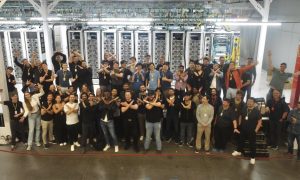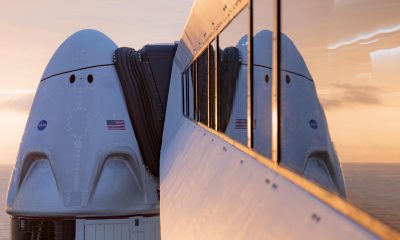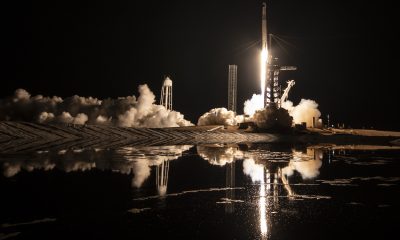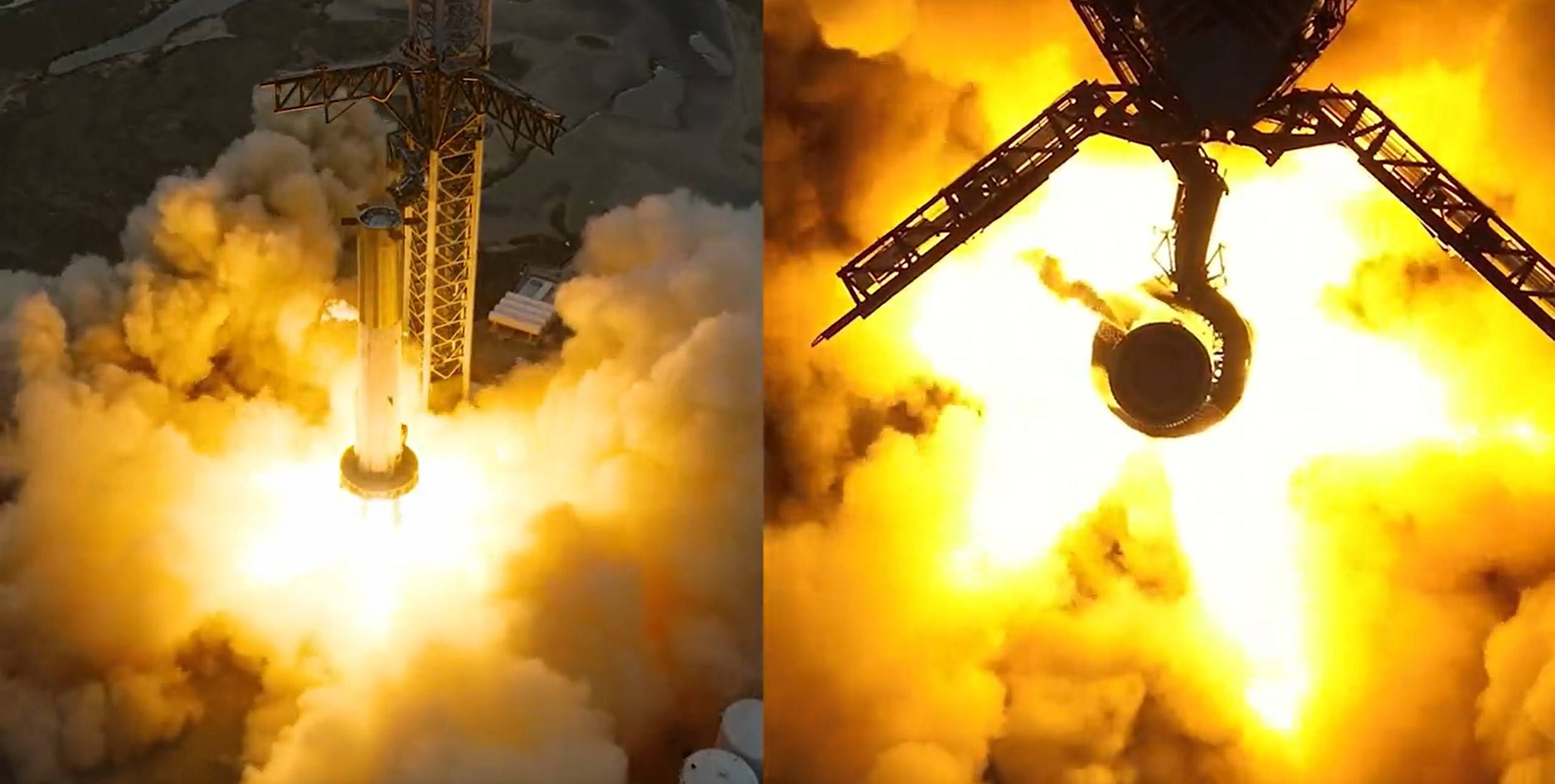

News
SpaceX Starship booster survives record-breaking 31-engine static fire
SpaceX’s Starship rocket has survived a record-breaking engine test – potentially the most powerful static fire in the history of rocketry.
According to CEO Elon Musk, Super Heavy Booster 7 (B7) ultimately ignited 31 of its 33 Raptor engines. One engine was manually disabled “just before” the static fire, while the other faulty engine automatically shut down while attempting to ignite. The other 31 Raptors, however, completed a “full duration” static fire that lasted about five seconds. Musk says that even with two engines disabled, those that remained were “still enough…to reach orbit” – an excellent result despite the static fire’s imperfections.
Most importantly, Super Heavy Booster 7 survived the test without catching fire, exploding, or popping its tanks. To partially counteract the thrust of its Raptor engines, the rocket’s tanks were filled with some 3000 tons (6.6M lbs) of liquid oxygen and methane propellant. The stool-like orbital launch mount (OLM), which also survived the test in one piece, held Starship down with 20 clamps to counteract any remaining thrust. From SpaceX’s perspective, the fact alone that its only orbital-class Starship launch site survived the ordeal is likely enough for it to consider the static fire a success. But the test was much more than that.
The update that's rolling out to the fleet makes full use of the front and rear steering travel to minimize turning circle. In this case a reduction of 1.6 feet just over the air— Wes (@wmorrill3) April 16, 2024
Incinerating rocket records
Despite losing two Raptors, SpaceX still broke the all-time record for the number of rocket engines ignited simultaneously. That record was held by the Soviet N1 rocket, which launched four times with 30 NK-15 engines in the late 1960s and early 1970s. None of its test flights were successful, but N1 still set the record for the most thrust produced by a single rocket, generating up to 4500 tons (9.9M lbf) of thrust at liftoff.
Neither SpaceX nor CEO Elon Musk has confirmed it, reducing the odds that Super Heavy Booster 7 broke that historic thrust record. But it certainly could have. Each Raptor 2 engine can generate up to 230 tons (507,000 lbf) of thrust at sea level. Raptor is theoretically designed to throttle as low as 40%, or 92 tons (~200,000 lbf) of thrust. With 33 engines operating nominally at their minimum throttle setting, Super Heavy would have produced 3036 tons (~6.7M lbf) of thrust during today’s static fire – not a record.
For 31 Raptors to break N1’s thrust record, the average throttle setting would have had to be around 64% or higher – far from unreasonable. From a data-gathering perspective, a full-thrust static fire would be the most valuable 33-engine test SpaceX could attempt, but it would also be the riskiest and most stressful for the rocket and pad.
Former SpaceX executive Tom Mueller says that SpaceX broke N1’s record. Mueller is effectively the father of the Raptor engine, and likely still gets information straight from SpaceX engineers he used to work with. Still, one would expect SpaceX itself to proudly confirm as much if a rocket it built became the most powerful in history.
The most powerful rocket test in history?
Whether or not Starship became the most powerful rocket in history, it has likely become the most powerful rocket ever tested on the ground. The first stage of Saturn V produced around 3400 tons (7.5M lbf) of thrust during its first sea-level static fire in 1965. Likely contributing to its failure, N1’s booster was never static-fired. Other powerful rockets like the Space Shuttle and SLS use or used a combination of solid rocket boosters and liquid engines that cannot be tested together on the ground.
Unless SpaceX’s goal was a minimum-throttle static fire, Starship’s 31-Raptor static fire likely beat Saturn V’s record to become the most powerful ground test in the history of rocketry.
SpaceX’s next steps
While the 31 that did ignite appeared to perform about as well as SpaceX could have hoped, the two engines missing from February 9th’s historic Starship static fire have probably complicated the company’s next steps. To be fully confident in Starship’s ability to launch and fly a safe distance away from the launch site, SpaceX would likely need to complete a full 33-engine test. Meanwhile, Starship can’t fly until the Federal Aviation Administration approves a launch license, and the FAA could be stodgy enough to deny SpaceX a license without a perfect 33-engine static fire.
Alternatively, the FAA may accept that Starship could still safely launch and reach orbit while missing several Raptors. SpaceX could also guarantee that it will only allow Starship to lift off if all 33 engines are active, in which case a second 33-engine static fire attempt may not be necessary.
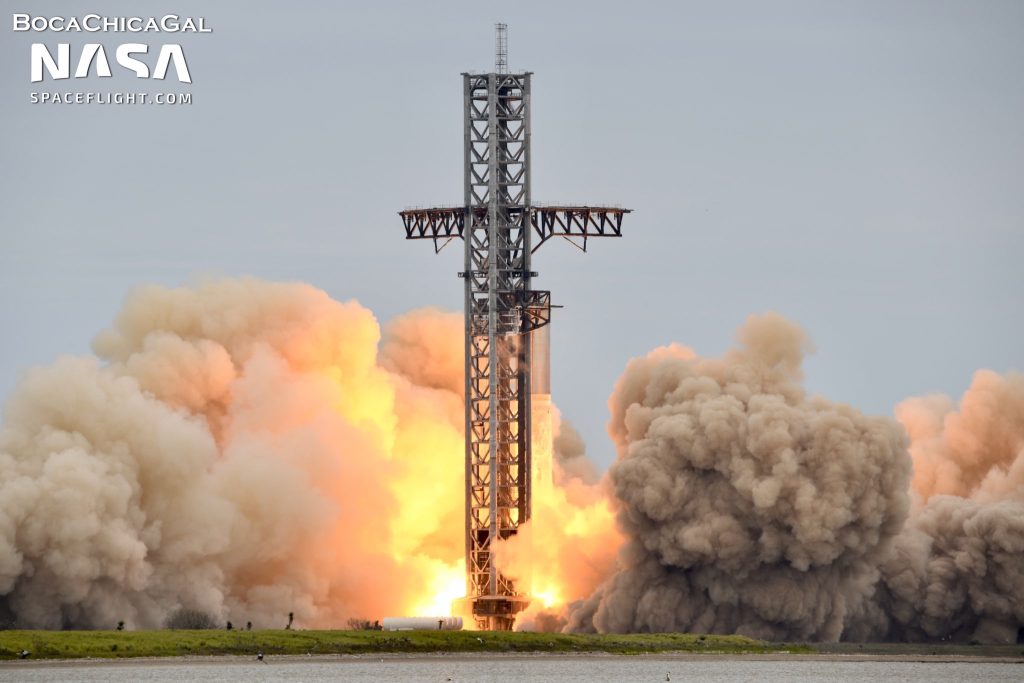
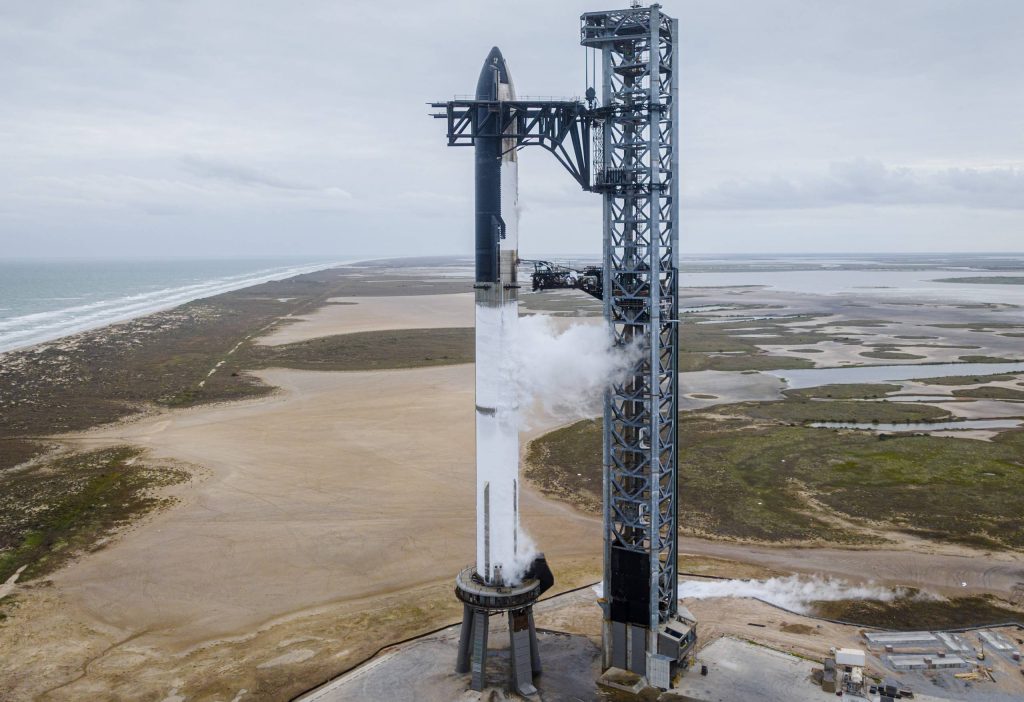
If SpaceX is happy with Booster 7’s 31-engine test results and isn’t too put off by any pad damage the test may or may not have caused, it will likely focus on finishing Starship 24. Ship 24 will then be transported back to the pad and reinstalled on top of Booster 7. SpaceX may choose to conduct another wet dress rehearsal or a static fire with the fully-stacked Starship, but it may also deem additional testing unnecessary.
Once all those tasks are completed, Ship 24 and Booster 7 will be ready to support Starship’s first orbital launch attempt. Prior to February 9th’s static fire, SpaceX CEO Elon Musk and COO/President Gwynne Shotwell agreed that Starship’s orbital launch debut could happen as early as March 2023. After today’s test, a March 2023 launch may be within reach.
Rewatch Super Heavy Booster 7’s historic static fire below.
Elon Musk
Tesla Supercharger Diner food menu gets a sneak peek as construction closes out
What are you ordering at the Tesla Diner?
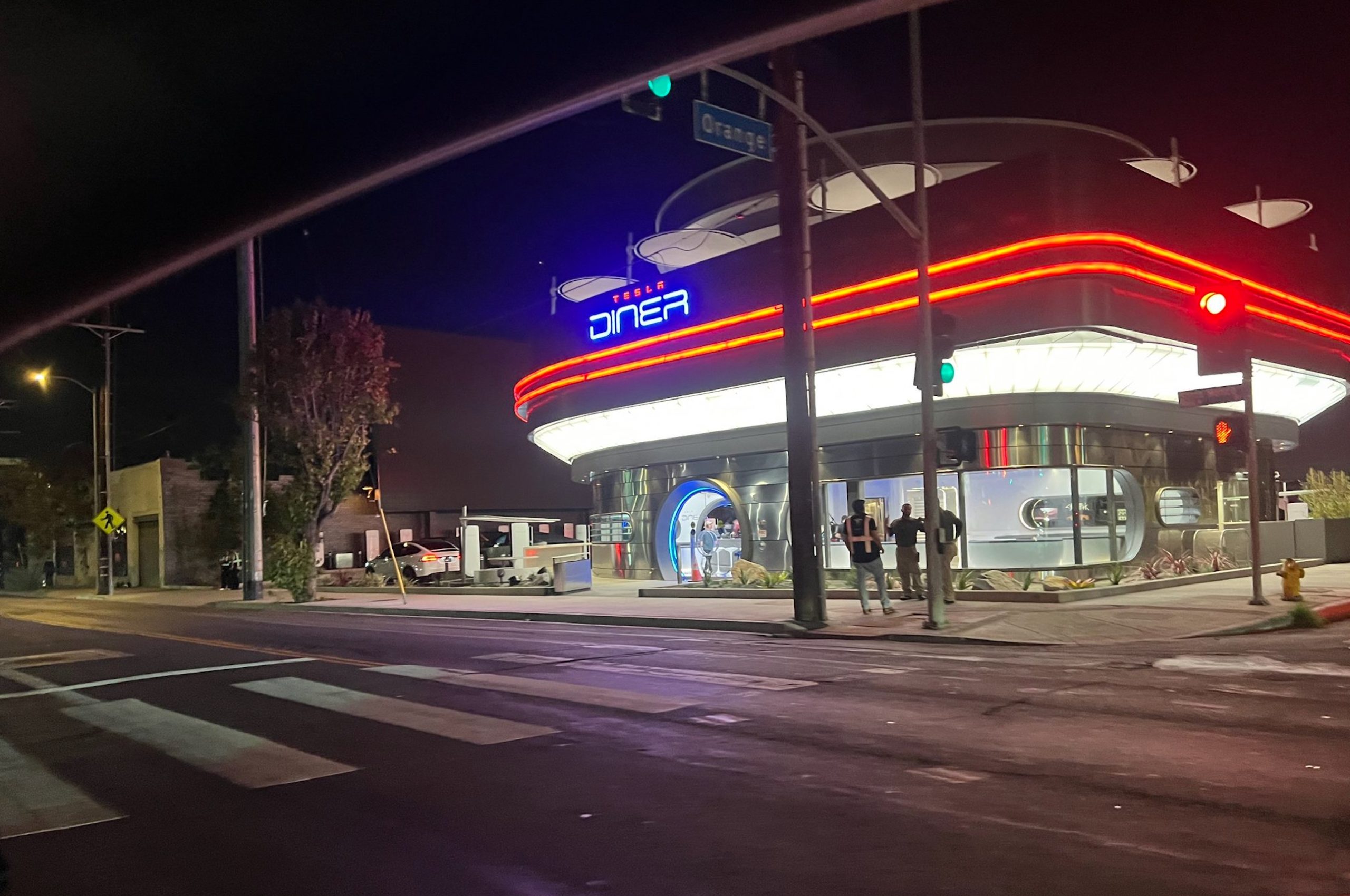
The Tesla Supercharger Diner in Los Angeles is nearing completion as construction appears to be winding down significantly. However, the more minor details, such as what the company will serve at its 50s-style diner for food, are starting to be revealed.
Tesla’s Supercharger Diner is set to open soon, seven years after CEO Elon Musk first drafted the idea in a post on X in 2018. Musk has largely come through on most of what he envisioned for the project: the diner, the massive movie screens, and the intended vibe are all present, thanks to the aerial and ground footage shared on social media.
We already know the Diner will be open 24/7, based on decals placed on the front door of the restaurant that were shared earlier this week. We assume that Tesla Optimus will come into play for these long and uninterrupted hours.
The Tesla Diner is basically finished—here’s what it looks like
As far as the food, Tesla does have an email also printed on the front door of the Diner, but we did not receive any response back (yet) about what cuisine it will be offering. We figured it would be nothing fancy and it would be typical diner staples: burgers, fries, wings, milkshakes, etc.
According to pictures taken by @Tesla_lighting_, which were shared by Not a Tesla App, the food will be just that: quick and affordable meals that diners do well. It’s nothing crazy, just typical staples you’d find at any diner, just with a Tesla twist:
Tesla Diner food:
• Burgers
• Fries
• Chicken Wings
• Hot Dogs
• Hand-spun milkshakes
• And more https://t.co/kzFf20YZQq pic.twitter.com/aRv02TzouY— Sawyer Merritt (@SawyerMerritt) July 17, 2025
As the food menu is finalized, we will be sure to share any details Tesla provides, including a full list of what will be served and its prices.
Additionally, the entire property appears to be nearing its final construction stages, and it seems it may even be nearing completion. The movie screens are already up and showing videos of things like SpaceX launches.
There are many cars already using the Superchargers at the restaurant, and employees inside the facility look to be putting the finishing touches on the interior.
🚨 Boots on the ground at the Tesla Diner:
— TESLARATI (@Teslarati) July 17, 2025
It’s almost reminiscent of a Tesla version of a Buc-ee’s, a southern staple convenience store that offers much more than a traditional gas station. Of course, Tesla’s version is futuristic and more catered to the company’s image, but the idea is the same.
It’s a one-stop shop for anything you’d need to recharge as a Tesla owner. Los Angeles building permits have not yet revealed the date for the restaurant’s initial operation, but Tesla may have its eye on a target date that will likely be announced during next week’s Earnings Call.
News
Tesla’s longer Model Y did not scale back requests for this vehicle type from fans
Tesla fans are happy with the new Model Y, but they’re still vocal about the need for something else.
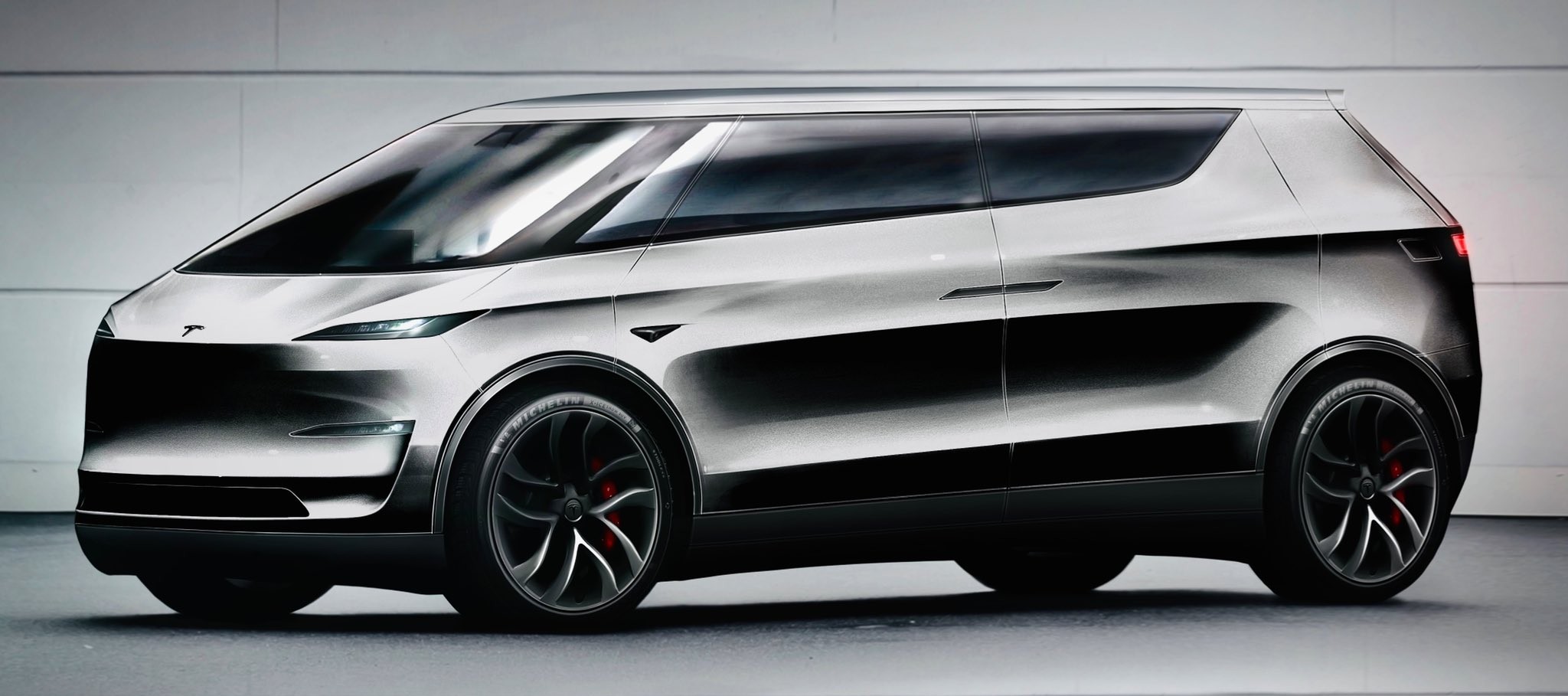
Tesla launched a slightly longer version of the Model Y all-electric crossover in China, and with it being extremely likely that the vehicle will make its way to other markets, including the United States, fans are still looking for something more.
The new Model Y L in China boasts a slightly larger wheelbase than its original version, giving slightly more interior room with a sixth seat, thanks to a third row.
Tesla exec hints at useful and potentially killer Model Y L feature
Tesla has said throughout the past year that it would focus on developing its affordable, compact models, which were set to begin production in the first half of the year. The company has not indicated whether it met that timeline or not, but many are hoping to see unveilings of those designs potentially during the Q3 earnings call.
However, the modifications to the Model Y, which have not yet been officially announced for any markets outside of China, still don’t seem to be what owners and fans are looking forward to. Instead, they are hoping for something larger.
A few months ago, I reported on the overall consensus within the Tesla community that the company needs a full-size SUV, minivan, or even a cargo van that would be ideal for camping or business use.
Tesla is missing one type of vehicle in its lineup and fans want it fast
That mentality still seems very present amongst fans and owners, who state that a full-size SUV with enough seating for a larger family, more capability in terms of cargo space for camping or business operation, and something to compete with gas cars like the Chevrolet Tahoe, Ford Expedition, or electric ones like the Volkswagen ID.BUZZ.
We asked the question on X, and Tesla fans were nearly unanimously in support of a larger SUV or minivan-type vehicle for the company’s lineup:
🚨 More and more people are *still* saying that, despite this new, longer Model Y, Tesla still needs a true three-row SUV
Do you agree? https://t.co/QmbRDcCE08 pic.twitter.com/p6m5zB4sDZ
— TESLARATI (@Teslarati) July 16, 2025
Here’s what some of the respondents said:
100% agree, we need a larger vehicle.
Our model Y is quickly getting too small for our family of 5 as the kids grow. A slightly longer Y with an extra seat is nice but it’s not enough if you’re looking to take it on road trips/vacations/ kids sports gear etc.
Unfortunately we…
— Anthony Hunter (@_LiarsDice_) July 17, 2025
Had to buy a Kia Carnival Hybrid because Tesla doesn’t have a true 3 row vehicle with proper space and respectable range. pic.twitter.com/pzwFyHU8Gi
— Neil, like the astronaut (@Neileeyo) July 17, 2025
Agreed! I’m not sure who created this but I liked it enough to save it. pic.twitter.com/Sof5nMehjS
— 🦉Wise Words of Wisdom – Inspirational Quotes (IQ) (@WiseWordsIQ) July 16, 2025
Tesla is certainly aware that many of its owners would like the company to develop something larger that competes with the large SUVs on the market.
However, it has not stated that anything like that is in the current plans for future vehicles, as it has made a concerted effort to develop Robotaxi alongside the affordable, compact models that it claims are in development.
It has already unveiled the Robovan, a people-mover that can seat up to 20 passengers in a lounge-like interior.
The Robovan will be completely driverless, so it’s unlikely we will see it before the release of a fully autonomous Full Self-Driving suite from Tesla.
Energy
Tesla launches first Virtual Power Plant in UK – get paid to use solar
Tesla has launched its first-ever Virtual Power Plant program in the United Kingdom.
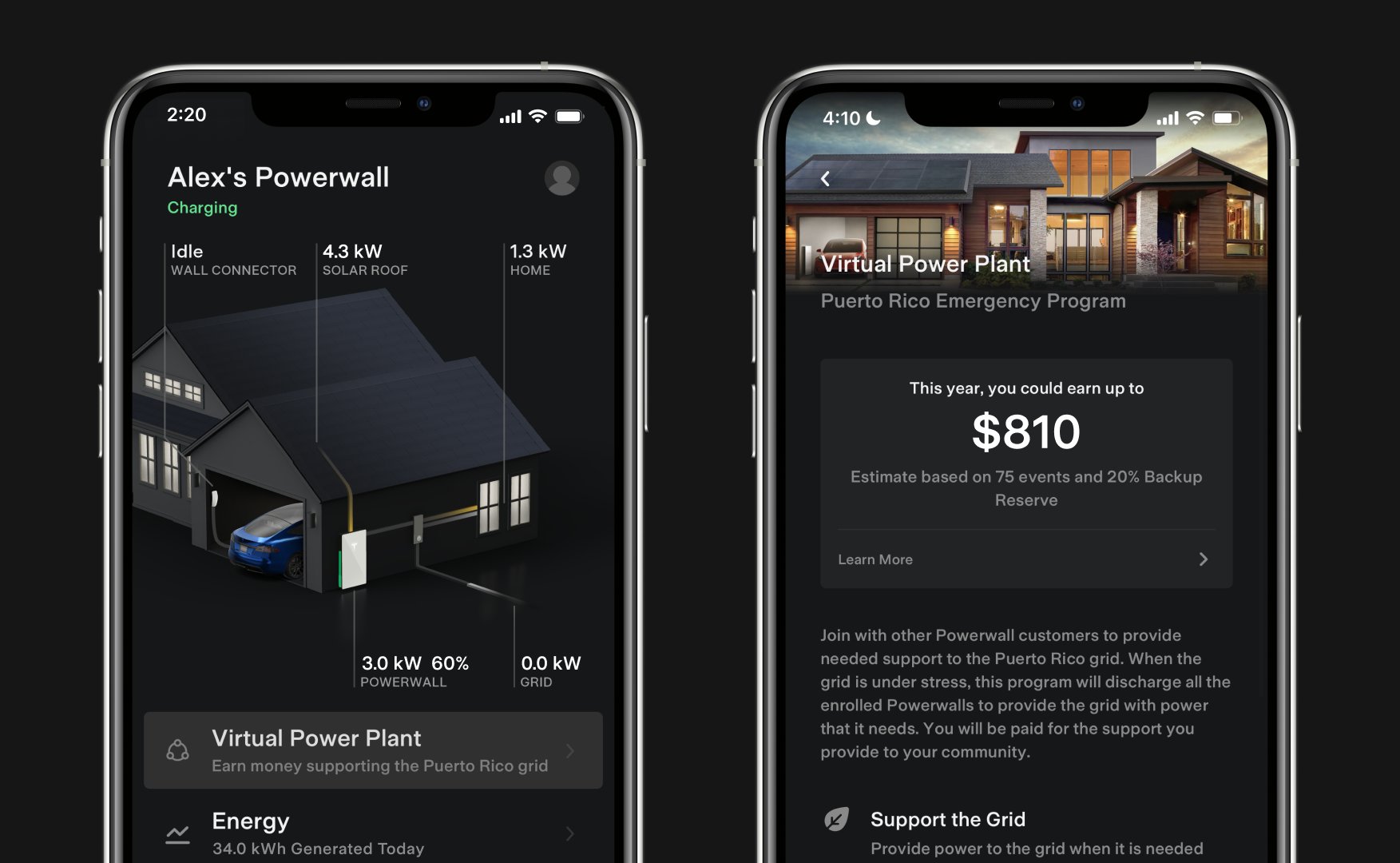
Tesla has launched its first-ever Virtual Power Plant program in the United Kingdom. This feature enables users of solar panels and energy storage systems to sell their excess energy back to the grid.
Tesla is utilizing Octopus Energy, a British renewable energy company that operates in multiple markets, including the UK, France, Germany, Italy, Spain, Australia, Japan, New Zealand, and the United States, as the provider for the VPP launch in the region.
The company states that those who enroll in the program can earn up to £300 per month.
Tesla has operated several VPP programs worldwide, most notably in California, Texas, Connecticut, and the U.S. territory of Puerto Rico. This is not the first time Tesla has operated a VPP outside the United States, as there are programs in Australia, Japan, and New Zealand.
This is its first in the UK:
Our first VPP in the UK
You can get paid to share your energy – store excess energy in your Powerwall & sell it back to the grid
You’re making £££ and the community is powered by clean energy
Win-win pic.twitter.com/evhMtJpgy1
— Tesla UK (@tesla_uk) July 17, 2025
Tesla is not the only company that is working with Octopus Energy in the UK for the VPP, as it joins SolarEdge, GivEnergy, and Enphase as other companies that utilize the Octopus platform for their project operations.
It has been six years since Tesla launched its first VPP, as it started its first in Australia back in 2019. In 2024, Tesla paid out over $10 million to those participating in the program.
Participating in the VPP program that Tesla offers not only provides enrolled individuals with the opportunity to earn money, but it also contributes to grid stabilization by supporting local energy grids.
-
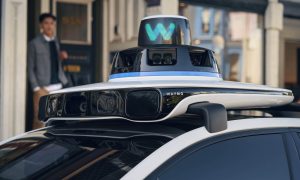
 Elon Musk1 day ago
Elon Musk1 day agoWaymo responds to Tesla’s Robotaxi expansion in Austin with bold statement
-
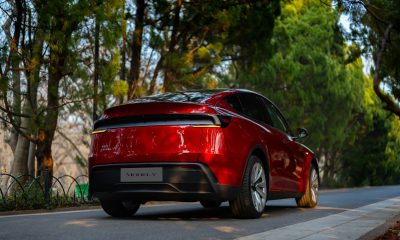
 News1 day ago
News1 day agoTesla exec hints at useful and potentially killer Model Y L feature
-

 Elon Musk2 days ago
Elon Musk2 days agoElon Musk reveals SpaceX’s target for Starship’s 10th launch
-

 Elon Musk3 days ago
Elon Musk3 days agoTesla ups Robotaxi fare price to another comical figure with service area expansion
-
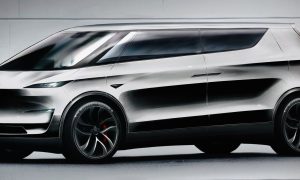
 News1 day ago
News1 day agoTesla’s longer Model Y did not scale back requests for this vehicle type from fans
-
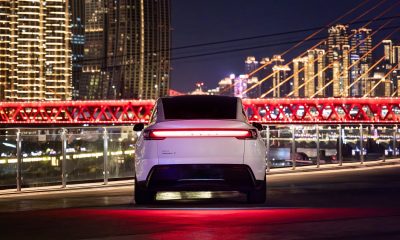
 News1 day ago
News1 day ago“Worthy of respect:” Six-seat Model Y L acknowledged by Tesla China’s biggest rivals
-
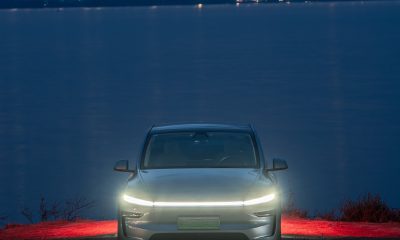
 News2 days ago
News2 days agoFirst glimpse of Tesla Model Y with six seats and extended wheelbase
-
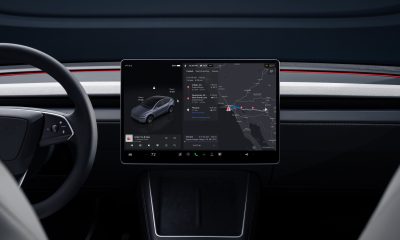
 Elon Musk2 days ago
Elon Musk2 days agoElon Musk confirms Tesla is already rolling out a new feature for in-car Grok


